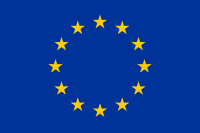Observatory Online Co-Creation Workshop
Developing spaces for digital collaboration and sharing
The inDICEs project is delighted to announce a new Massive Open Online Course (MOOC) which aims to support cultural heritage professionals at all stages of their careers to develop digital strategies. The MOOC is free to join and open to all - sign up today!

New questions for the cultural heritage sector
The fast advance of new digital technologies and, more recently, the COVID-19 pandemic, have encouraged many cultural heritage institutions to make their collections digitally accessible and reusable. In the last two decades, millions of objects - artworks, documents, and media - have found thei...
Read more
Contributors: Oyidiyda Oji, Rasa Bočytė and Claudia Cacovean
Hypothesis
Covid-19 has exposed and amplified certain cracks and societal ills and among them has been the spread of misinformation and hate speech against various social groups. The question presented to the fourth task force composed of: Rasa Bočytė, Claudia Cacovean, Marta Anducas, Oyidiya Oji and Nadia Nadesan in the InDICEs bootcamp was essentially to understand the impact of misinformation on society and the role that galleries, libraries, archives, and museums can take in addressing it.
The pieces of this puzzle are many, so in ...
Read more
Author: Elisa Pellegrini & Contributors: Rasa Bočytė & Maria Tartari
On the 20th of April, inDICEs project invited cultural heritage professionals, policymakers and researchers to take part in a focus group session to guide our work for the creation of the inDICEs Open Observatory. Together we discussed and collected insights on frameworks, trends, best practices and new business models that can enhance the circulation and creative use of cultural heritage. Specifically, we aimed to gather contributions on how our methodology for monitoring and analysing trends in the digital domain could he...
Read more
“The Exhibit of American Negroes”
Some of the most brilliant early examples of what we call today ‘narrative data’ or ‘data visualization’ emerged from an urgent need to communicate crucial information. One such example is Florence Nightingale’s visual data from the Crimean War and W.E.B. DuBois’ “The Exhibit of American Negroes”. Both these visionary examples come from intellectuals who were often disenfranchised and faced obstacles to be heard and seen as valid. While of course creativity and an understanding of narrative are paramount to tell a story with data, perhaps another driving factor...
Read more






